








9. Asia Pacific Polycarbonate Polyester Blend Market Outlook, 2018-2028F
9.1. Market Size & Forecast
9.1.1. By Value & Volume
9.2. Market Share & Forecast
9.2.1. By Resin
9.2.2. By Grade
9.2.3. By Flow Rate
9.2.4. By End-Use
9.2.5. By Country
9.3. Asia Pacific: Country Analysis
9.3.1. China Polycarbonate Polyester Blend Market Outlook, 2018-2028F

9.3.1.1. Market Size & Forecast
9.3.1.1.1. By Value & Volume
9.3.1.2. Market Share & Forecast
9.3.1.2.1. By Resin
9.3.1.2.2. By Grade
9.3.1.2.3. By Flow Rate
9.3.1.2.4. By End-Use
9.3.2. India Polycarbonate Polyester Blend Market Outlook, 2018-2028F
9.3.2.1. Market Size & Forecast
9.3.2.1.1. By Value & Volume
9.3.2.2. Market Share & Forecast
9.3.2.2.1. By Resin
9.3.2.2.2. By Grade 9.3.2.2.3. By Flow Rate
9.3.2.2.4 By End-Use
9.3.3. South Korea Polycarbonate Polyester Blend Market Outlook, 2018-2028F

9.3.3.1. Market Size & Forecast
9.3.3.1.1. By Value & Volume
9.3.3.2. Market Share & Forecast
9.3.3.2.1. By Resin
9.3.3.2.2. By Grade
9.3.3.2.3. By Flow Rate
9.3.3.2.4 By End-Use
9.3.4. Japan Polycarbonate Polyester Blend Market Outlook, 2018-2028F
9.3.4.1. Market Size & Forecast
9.3.4.1.1. By Value & Volume
9.3.4.2. Market Share & Forecast
9.3.4.2.1. By Resin 9.3.4.2.2. By Grade 9.3.4.2.3. By Flow Rate
9.3.4.2.4 By End-Use
9.3.5. Australia Polycarbonate Polyester Blend Market Outlook, 2018-2028F

9.3.5.1. Market Size & Forecast
9.3.5.1.1. By Value & Volume
9.3.5.2. Market Share & Forecast
9.3.5.2.1. By Resin
9.3.5.2.2. By Grade
9.3.5.2.3. By Flow Rate
9.3.5.2.4 By End-Use
9.3.6. Indonesia Polycarbonate Polyester Blend Market Outlook, 2018-2028F
9.3.6.1. Market Size & Forecast
9.3.6.1.1. By Value & Volume
9.3.6.2. Market Share & Forecast
9.3.6.2.1. By Resin 9.3.6.2.2. By Grade 9.3.6.2.3. By Flow Rate
9.3.6.2.4 By End-Use
9.3.7. Vietnam Polycarbonate Polyester Blend Market Outlook, 2018-2028F

9.3.7.1. Market Size & Forecast
9.3.7.1.1. By Value & Volume
9.3.7.2. Market Share & Forecast
9.3.7.2.1. By Resin
9.3.7.2.2. By Grade
9.3.7.2.3. By Flow Rate
9.3.7.2.4 By End-Use
10. North America Polycarbonate Polyester Blend Market Outlook, 2018-2028F
10.1. Market Size & Forecast
10.1.1. By Value & Volume
10.2. Market Share & Forecast
10.2.1. By Resin
10.2.2. By Grade
10.2.3. By Flow Rate
10.2.4. By End-Use
10.2.5. By Country
10.3. North America: Country Analysis
10.3.1. United States Polycarbonate Polyester Blend Market Outlook, 2018-2028F

10.3.1.1. Market Size & Forecast
10.3.1.1.1 By Value & Volume
10.3.1.2. Market Share & Forecast
10.3.1.2.1 By Resin
10.3.1.2.2 By Grade
10.3.1.2.3 By Flow Rate
10.3.1.2.4 By End-Use
10.3.2. Canada Polycarbonate Polyester Blend Market Outlook, 2018-2028F

10.3.2.1. Market Size & Forecast
10.3.2.1.1 By Value & Volume
10.3.2.2. Market Share & Forecast
10.3.2.2.1 By Resin
10.3.2.2.2 By Grade
10.3.2.2.3 By Flow Rate
10.3.2.2.4 By End-Use
10.3.3. Mexico Polycarbonate Polyester Blend Market Outlook, 2018-2028F
10.3.3.1. Market Size & Forecast
10.3.3.1.1 By Value & Volume
10.3.3.2. Market Share & Forecast
10.3.3.2.1 By Resin
10.3.3.2.2 By Grade
10.3.3.2.3 By Flow Rate
10.3.3.2.4 By End-Use
11. Europe & CIS Polycarbonate Polyester Blend Market Outlook, 2018-2028F

11.1. Market Size & Forecast
11.1.2. By Value & Volume
11.2. Market Share & Forecast
11.2.1. By Resin
11.2.2. By Grade 11.2.3. By Flow Rate 11.2.4. By End-Use 11.2.5. By Country
11.3. Europe & CIS: Country Analysis
11.3.1. Germany Polycarbonate Polyester Blend Market Outlook, 2018-2028F
11.3.1.1. Market Size & Forecast
11.3.1.1.1. By Value & Volume
11.3.1.2. Market Share & Forecast
11.3.1.2.1. By Resin
11.3.1.2.2. By Grade
11.3.1.2.3. By Flow Rate
11.3.1.2.4. By End- Use
11.3.2. Italy Polycarbonate Polyester Blend Market Outlook, 2018-2028F

11.3.2.1. Market Size & Forecast
11.3.2.1.1. By Value & Volume
11.3.2.2. Market Share & Forecast
11.3.2.2.1. By Resin
11.3.2.2.2. By Grade
11.3.2.2.3. By Flow Rate
11.3.2.2.4. By End-Use
11.3.3. France Polycarbonate Polyester Blend Market Outlook, 2018-2028F
11.3.3.1. Market Size & Forecast
11.3.3.1.1 By Value & Volume
11.3.3.2. Market Share & Forecast
11.3.3.2.1. By Resin
11.3.3.2.2. By Grade
11.3.3.2.3. By Flow Rate
11.3.3.2.4. By End-Use
11.3.4. United Kingdom Polycarbonate Polyester Blend Market Outlook, 2018-2028F
11.3.4.1. Market Size & Forecast
11.3.4.1.1. By Value & Volume
11.3.4.2. Market Share & Forecast
11.3.4.2.1. By Resin
11.3.4.2.2. By Grade
11.3.4.2.3. By Flow Rate
11.3.4.2.4. By End-Use
11.3.5. Russia Polycarbonate Polyester Blend Market Outlook, 2018-2028F

11.3.5.1. Market Size & Forecast
11.3.5.1.1 By Value & Volume
11.3.5.2. Market Share & Forecast
11.3.5.2.1. By Resin
11.3.5.2.2. By Grade
11.3.5.2.3. By Flow Rate
11.3.5.2.4. By End-Use
12. Middle East & Africa Polycarbonate Polyester Blend Market Outlook, 2018-2028F

12.1. Market Size & Forecast
12.1.2. By Value & Volume
12.2. Market Share & Forecast
12.2.1. By Resin
12.2.2. By Grade
12.2.3. By Flow Rate
12.2.4. By End-Use
12.2.5. By Country
12.3. Middle East & Africa: Country Analysis
12.3.1. Saudi Arabia Polycarbonate Polyester Blend Market Outlook, 2018-2028F
12.3.1.1. Market Size & Forecast
12.3.1.1.1. By Value & Volume
12.3.1.2. Market Share & Forecast
12.3.1.2.1. By Resin
12.3.1.2.2. By Grade
12.3.1.2.3. By Flow Rate
12.3.1.2.4. By End-Use
12.3.2. South Africa Polycarbonate Polyester Blend Market Outlook, 2018-2028F
12.3.2.1. Market Size & Forecast
12.3.2.1.1 By Value & Volume
12.3.2.2. Market Share & Forecast 12.3.2.2.1. By Resin 12.3.2.2.2. By Grade 12.3.2.2.3. By Flow Rate 12.3.2.2.4. By End-Use

12.3.3. UAE Polycarbonate Polyester Blend Market Outlook, 2018-2028F
12.3.3.1. Market Size & Forecast 12.3.3.1.1. By Value & Volume
12.3.3.2. Market Share & Forecast
12.3.3.2.1. By Resin 12.3.3.2.2. By Grade 12.3.3.2.3. By Flow Rate 12.3.3.2.4. By End-Use
12.3.4. Egypt Polycarbonate Polyester Blend Market Outlook, 2018-2028F

12.3.4.1. Market Size & Forecast
12.3.4.1.1 By Value & Volume
12.3.4.2. Market Share & Forecast
12.3.4.2.1. By Resin
12.3.4.2.2. By Grade
12.3.4.2.3. By Flow Rate
12.3.4.2.4. By End-Use
13.1. Market Size & Forecast
13.1.2. By Value & Volume
13.2. Market Share & Forecast
13.2.1. By Resin
13.2.2. By Grade
13.2.3. By Flow Rate
13.2.4. By End-Use
13.2.5. By Country
13.3 South America : Country Analysis
13.3.1. Brazil Polycarbonate Polyester Blend Market Outlook, 2018-2028F

13.3.1.1. Market Size & Forecast
13.3.1.1.1. By Value & Volume
13.3.1.2. Market Share & Forecast
13.3.1.2.1. By Resin
13.3.1.2.2. By Grade
13.3.1.2.3. By Flow Rate
13.3.1.2.4. By End-Use
13.3.2. Argentina Polycarbonate Polyester Blend Market Outlook, 2018-2028F
13.3.2.1. Market Size & Forecast
13.3.2.1.1 By Value & Volume
13.3.2.2. Market Share & Forecast
13.3.2.2.1. By Resin
13.3.2.2.2. By Grade
13.3.2.2.3. By Flow Rate
13.3.2.2.4. By End-Use
13.3.3. Colombia Polycarbonate Polyester Blend Market Outlook, 2018-2028F

13.3.3.1. Market Size & Forecast
13.3.3.1.1. By Value & Volume
13.3.3.2. Market Share & Forecast
13.3.3.2.1. By Resin 13.3.3.2.2. By Grade 13.3.3.2.3. By Flow Rate
13.3.3.2.4. By End-Use
17.1.1. Covestro AG
17.1.2. Saudi Basic Industries Corporation
17.1.3. LG Chem Ltd.
17.1.4. Lotte Chemical Corporation
17.1.5. Mitsubishi Chemical Corporation
17.1.6. Bhansali Engineering Polymers Ltd.

17.1.7. Ineos Group Holdings S.A.
17.1.8. Duromer Products
17.1.9. Polykemi AB
17.1.10. Entec Polymers LLC
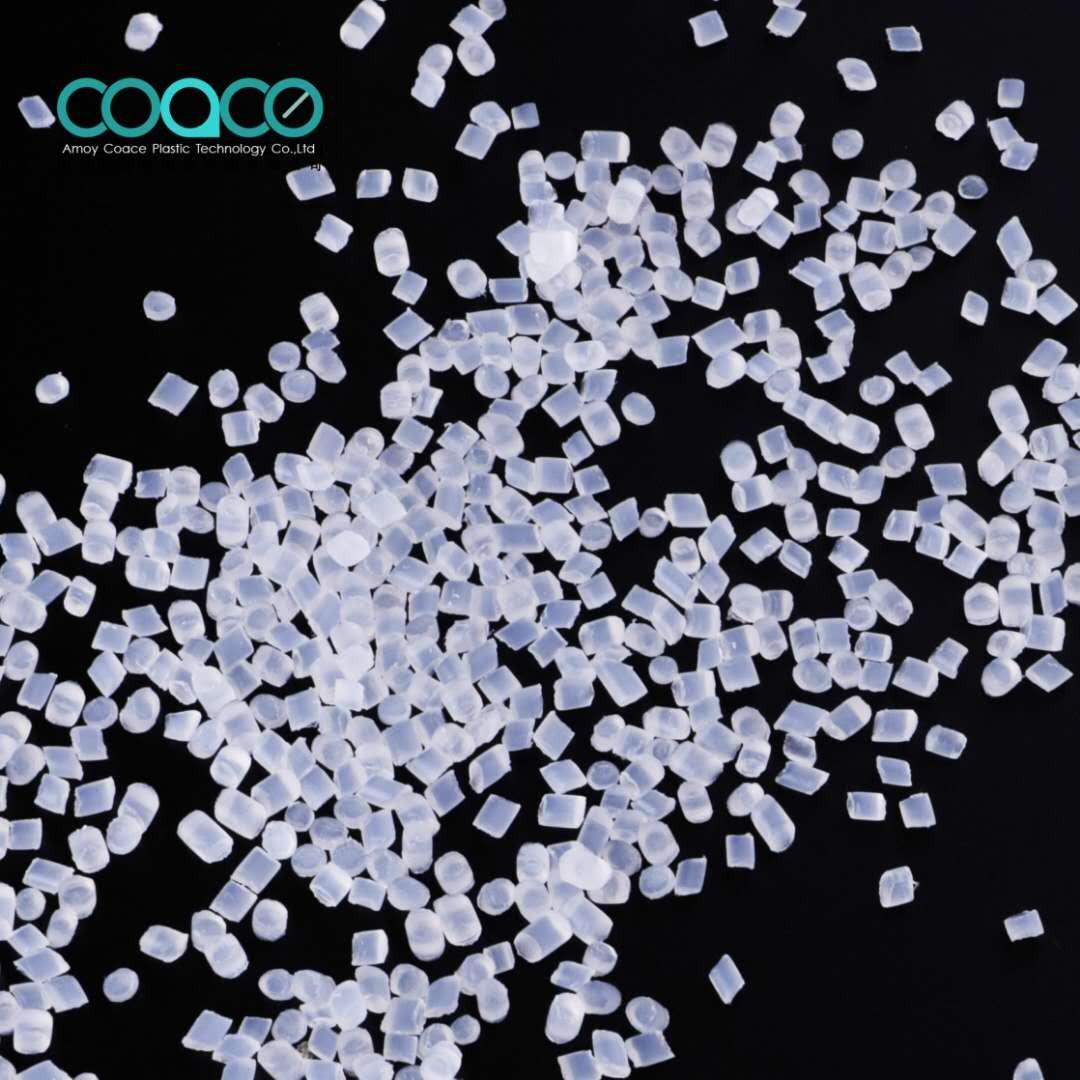

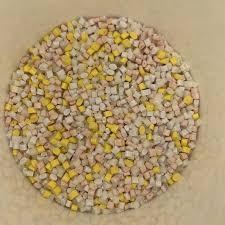
• Polycarbonates (PC) are used in several applications because Polycarbonate provides high rigidity, excellent toughness, and good heat resistance. However, they are non-resistant to organic chemicals. Polyesters like PBT and PET have high resistance to organic chemicals. In addition, they are rigid and can bear high temperatures. Therefore, these materials are combined together to have desirable properties.
• Blends of polycarbonate and polyesters have several advantageous properties, such as electrical & chemical resistance, good heat absorption, and oxidative and thermal stability. These properties make polycarbonate-polyester blends useful in numerous applications, such as medical containers, hot tub covers, electronic devices, and automotive bodies.
• Polycarbonate polyester blend can be segmented into resin, grade, flow rate, end-use, and region.
• Based on resin, the market is bifurcated into PC-PBT, PC-ABS, PC-ASA, and Others.

PC-PBT (Polycarbonate-Polybutylene Terephthalate) is a thermoplastic alloy of amorphous polycarbonate and semicrystalline polyester. PC/PBT polymer blend offers good heat resistance and toughness at low temperatures.
PC-ABS (Polycarbonate-Acrylonitrile-Butadiene-Styrene Terpolymer blends) is a thermoplastic alloy of polycarbonate and acrylonitrile-butadiene-styrene. Both polycarbonate (PC) and acrylonitrile-butadiene-styrene (ABS) materials are well-known amorphous plastics. These two materials enhance processability and offer non-halo flame retardancy.
PC-ASA (Polycarbonate-Acrylic-Styrene-Acrylate Terpolymer blends) offers high impact strength at low temperatures, high-temperature stability, and good UV-stability and surface properties.
• Based on grade, the polycarbonate polyester blend market can be segmented into injection, extrusion, general purpose, and others.
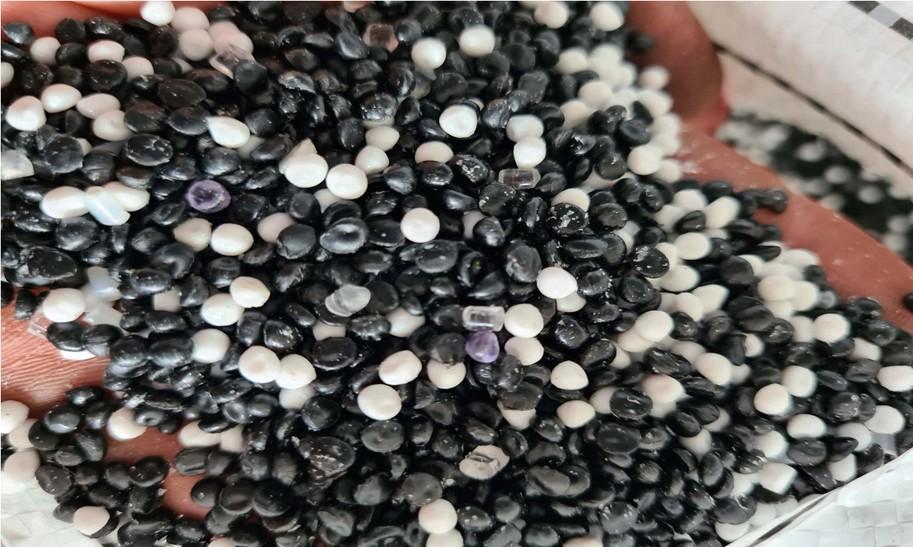

Injection Molding involves injecting material into a mold to produce a part. In this, a molten or softened polymer is injected, at high pressure, into a shaped mold, and held at an intermediate temperature or room temperature. In the injection process, lower molecular weight polymer is preferred, and more intricate parts are made where resistance to polymer melt flow is higher. The process is required to create continuous linear, two-dimensional shapes.
In Extrusion, a higher molecular weight Polymer is preferred. The material is heated and pushed through a shaped cut in a metal plate, which creates a continuous form that can be stretched and then cooled to set. These linear products are then cut into parts, once cooled.
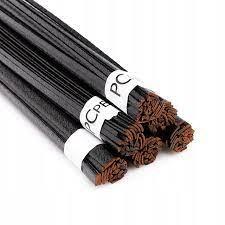
• Polycarbonate polyester blend material is used in various applications such as automotive spoilers, ski equipment, lawn and garden equipment, electrical and electronic devices, housings for medical, among others.
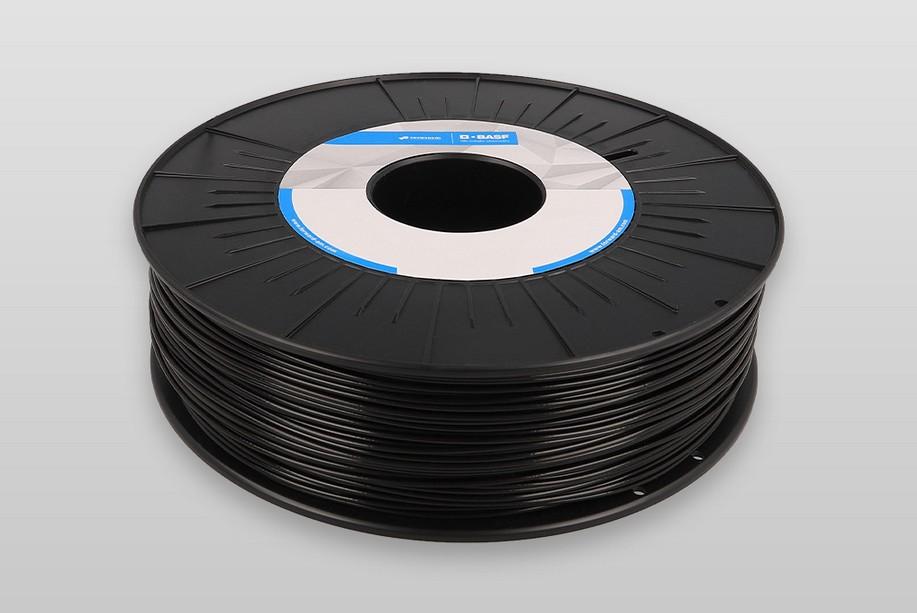

In-depth secondary research was conducted to determine the overall market size, segmental market size, and top players in the Global Polycarbonate polyester Blend Market.

In order to conduct industry experts’ interviews, TechSci formulated a detailed discussion guide.
List of industry players and industry specialists was developed.
TechSci conducted interviews with industry experts and industry players for data collection and verification.
Data obtained as a result of primary and secondary research was validated through rigorous triangulation.
The data was scrutinized using MS-Excel, statistical tools and internal proprietary database to obtain qualitative and quantitative insights about the Global Polycarbonate Polyester Blend market.

Our dedicated team of industry experts has monitored and analyzed various aspects of the Global Polycarbonate Polyester Blend market. The team has analyzed the outlook of various segments of this market, while considering the major influencing factors such as growing demand for automotive industry, and electrical appliance demand, among others. The study includes market forecasting, which would enable our clients to take better decisions while planning their strategy to achieve sustainability in the Global Polycarbonate Polyester Blend market.
• Market Size by Value and Volume : Market size, in terms of value, for the year 2021 was calculated based on information collected through exhaustive secondary research and primary surveys, with various key opinion leaders/stakeholders, such as polycarbonate blend manufacturers, research scientists/scholars, end users, industry experts, and other industry participants.
• The team interviewed more than 10 polycarbonate blend companies, 100 end users and 10 industry experts, and other value chain stakeholders in the Global Polycarbonate Polyester Blend market to obtain the overall market size between 2017 and 2021, which was validated by the Delphi technique. Taking standard deviation into consideration, the market size was averaged out, to arrive at the market size data during 2017-2021.
• Respondents were asked about the current and future market growth rates, market shares by resin, by grade, by flow rate, by enduse, by region and by company. Removing the outlier responses, the geometric mean of growth estimates and category wise revenue shares generated across various segments were considered to arrive at the final revenue shares.

Revenue shares generated across various segments were further triangulated based on the response received from other stakeholders.
• Market shares by resin, by grade, by flow rate, by end-use, by region and by company were calculated based on the responses received through primary surveys with industry experts, in which the respondents were asked about the market shares or revenue generated from various segments of the Global Polycarbonate Polyester Blend market. The final shares were calculated by taking the geometric mean of the responses gathered from key opinion leaders after eliminating the outliers.
• TechSci Research performed periodical checks on data collected through the surveys with logic checks and analyzed the survey results in SPSS/Tableau software. Data triangulation techniques were applied to fill the gaps and to present a more meaningful picture of the market. To forecast the Global Polycarbonate Polyester Blend market, TechSci Research used various forecast techniques such as:

Increasing demand from automotive industry is the major growth driver for the growth of global polycarbonate polyester blend market.
According to TechSci Research report, “Polycarbonate Polyester Blend Market – Global Industry Size, Share, Trends, Opportunity, and Forecast, 2018-2028”, the global polycarbonate polyester blend market stood at USD11,781.41 million in 2022 and is expected to grow at a CAGR of 6.35% during the forecast period. Polycarbonates are a class of thermoplastic polymers with carbonate functional groups in their basic chemical structure. Polyester is a type of polymer that contains the ester group in every repeat unit of the main chain.

Many sunroofs and small windowpanes used in automobiles with "all-round" glazing, are made of polycarbonate blend. The prospect for expansion is particularly present in windows and windscreens. Over the past ten years, polycarbonate polyester blend material manufacturers have made significant investments in research and development to achieve the high scratch-resistance lifespan, typically associated with glass.
Polycarbonate polyester blend provides a unique combination of strength, stiffness, and toughness that helps prevent potentially lifethreatening material failures. Its wide range of physical characteristics allow it to replace glass or metal in many applications. Additionally, it offers glass-like transparency, a crucial quality for clinical and diagnostic environments where it's necessary to see tissues, blood, and other fluids.
Global Polycarbonate Polyester Blend Market segmentation is based on Resin, Grade, Flow rate, End-Use, and regional distribution. Based on Resin, the market is further fragmented into PC-ABS, PC-PBT, PC-ASA, Others. PC-ABS segment dominated the market in 2022 with an overall market share of around 63.81%. This can be ascribed to the growing demand of electric vehicles worldwide. Based on grade, the market is further divided into Extrusion, Injection, General Purpose, and others. Extrusion segment dominated the market in 2022 on account of the widespread increase in demand for medical devices and electronics spare parts.
Some of the major companies operating in the global polycarbonate polyester blend market include Covestro AG, Saudi Basic Industries Corporation, LG Chem Ltd., Lotte Chemical Corporation, Mitsubishi Chemical Holding Corporation, Ineos Group, Bhansali Engineering Polymers Ltd., Duromer Products, Polykemi AB, Entec Polymers LLC
The companies already operating in the polycarbonate polyester blend market should focus on the medical sector as polycarbonate polyester blends are used in various medical instruments. The increasing prevalence of diseases, improving healthcare structure, and growing surgeries are responsible for the growing demand for various medical instruments., said Mr. Karan Chechi, Research Director with TechSci Research, a research based Global management consulting firm.



•
•
TechSci Research is a global market research and consulting company with offices in the US, UK and India. TechSci Research provides market research reports in number of areas to organizations. The company uses innovative business models that focus on improving productivity, while ensuring creation of high-quality reports. The proprietary forecasting models use various analyses of both industry-specific and macroeconomic variables on a state-by-state basis to produce a unique ‘bottom-up’ model of a country, regional and global industry prospects. Combined with the detailed analysis of company activity and industry trends, the result is a uniquely rich evaluation of the opportunities available in the market.Related Reports
The contents of this report are based on information generally available to the public from sources believed to be reliable. No representation is made that it is timely, accurate or complete. TechSci Research has taken due care and caution in compilation of data as this has been obtained from various sources including which it considers reliable and firsthand. However,
